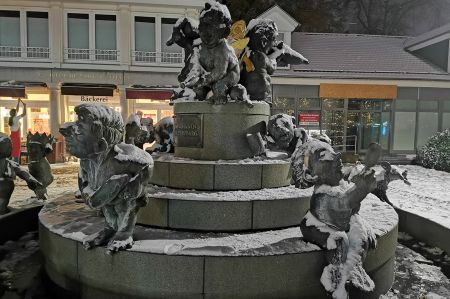Bad Harzburg – spa and retirement home for wealthy citizens
- Written by Portal Editor
Towards evening we had first come to the city centre and the pedestrian area of the second largest city in the district of Goslar, so the beautiful lighting of the Heilbad am Harz especially caught our eye in the run-up to Christmas.
Not only the urban lighting was in the foreground, no, the local business people had also added their contribution to the design, sometimes in the form of large, burning candles, sometimes in the form of a fire in a fire bowl. Beautiful to look at and very inviting for an evening stroll that can also end at the small Christmas market.
Development into the health and spa town of Bad Harzburg
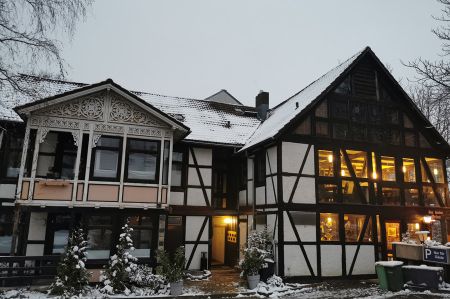 As early as 1569, during the reign of Duke Julius, a brine source was found and developed for the Juliushall salt works. At that time, this key event already laid the foundation for the subsequent spa operations.
As early as 1569, during the reign of Duke Julius, a brine source was found and developed for the Juliushall salt works. At that time, this key event already laid the foundation for the subsequent spa operations.
In 1819, Bad Harzburg was connected to the Wolfenbüttel–Harzburg postal route, which contributed significantly to the success and reputation of the town of Bad Harzburg. The postal expedition was later converted into a postal administration in 1848 and renamed the railway and post office in 1855, which, after further changes of name, became the first-class post office by 1904. In addition to this post office, since 1843 there was a horse-drawn post station with postilions.
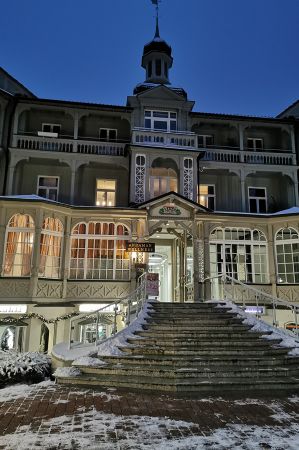 As early as 1831, the new town was known as a spa and bathing resort. The salt works were closed in 1851 and the actual bathing establishment began. Based on the example of the large European baths, a colony of wealthy citizens, initially from abroad, was established who knew how to combine the glamorous requirements of the time at the foot of the Harz mountains: elegant hotels, a casino, a horse racing track and numerous spa facilities.
As early as 1831, the new town was known as a spa and bathing resort. The salt works were closed in 1851 and the actual bathing establishment began. Based on the example of the large European baths, a colony of wealthy citizens, initially from abroad, was established who knew how to combine the glamorous requirements of the time at the foot of the Harz mountains: elegant hotels, a casino, a horse racing track and numerous spa facilities.
The city was connected to the railway network at an exceptionally early stage, when the state railway line between Braunschweig and Bad Harzburg went into operation on October 31, 1841. Until 1843, this route ran on the section to Vienenburg as a horse-drawn tram.
In the 19th century, Bad Harzburg achieved the status of a global spa.
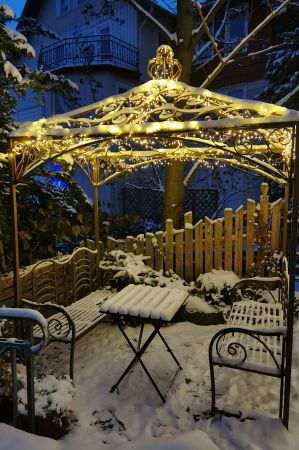 By 1892, Neustadt-Harzburg had grown into a self-confident bathing community that no longer called itself Neustadt arbitrarily, but used the name of the Brunswick district of Harzburg.
By 1892, Neustadt-Harzburg had grown into a self-confident bathing community that no longer called itself Neustadt arbitrarily, but used the name of the Brunswick district of Harzburg.
Around 1900, Harzburg achieved the title of a “world spa”, since, in contrast to other spa and bathing resorts, it was a bathing community that was largely spared from the bathing anti-Semitism that was widespread at the time; Historians estimate the proportion of Jewish guests at this time to be 10 percent.
Bad Harzburg differentiated itself from other bathing resorts such as Borkum, which described themselves as “Jew-free”, by deliberately advertising with its openness.
Iron ore deposits mean entry into industrialization
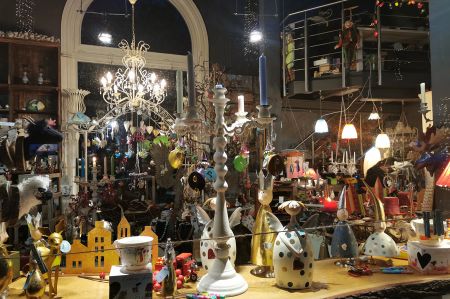 Industrialization reached Bad Harzburg when Wilhelm Castendyck discovered iron ore deposits near Neustadt-Harzburg between 1859 and 1861. Between 1860 and 1861, together with the Bremen Consul Hermann Henrich Meier, he founded the Mathildenhütte between Schlewecke and Westerode as well as the Friederike and Hansa iron ore mines. This was the beginning of the Harzburg mining history, which lasted until the Langenberg limestone quarry was shut down in 1985.
Industrialization reached Bad Harzburg when Wilhelm Castendyck discovered iron ore deposits near Neustadt-Harzburg between 1859 and 1861. Between 1860 and 1861, together with the Bremen Consul Hermann Henrich Meier, he founded the Mathildenhütte between Schlewecke and Westerode as well as the Friederike and Hansa iron ore mines. This was the beginning of the Harzburg mining history, which lasted until the Langenberg limestone quarry was shut down in 1985.
In the 20th century, Bad Harzburg was the location of an important business academy, which brought about a paradigm shift in early management theory with the Harzburg model. In the Harlingerode district, there was a centre of German metallurgy in the 20th century with the Harz iron and steel works.
Wealthy citizens choose Bad Harzburg as their retirement home
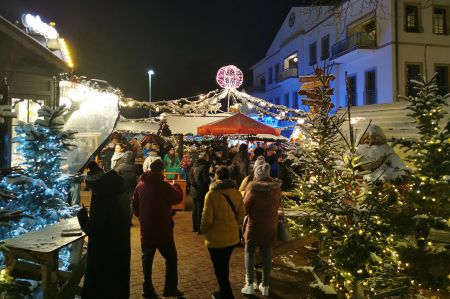 The economic conditions have changed in the last hundred years: The core town of Bad Harzburg has always been considered a spa town, inhabited by quite wealthy spa guests; the casino in Bad Harzburg, which has meanwhile moved to Braunschweig, did the rest. Today, Bad Harzburg's economy is mainly based on trade, tourism and gastronomy. As a spa with a wide range of facilities from the 19th and 20th centuries, it has a traditional tourism culture, and modern projects such as the treetop path in Bad Harzburg and the adjoining tree suspension railway complement the city's tourist life.
The economic conditions have changed in the last hundred years: The core town of Bad Harzburg has always been considered a spa town, inhabited by quite wealthy spa guests; the casino in Bad Harzburg, which has meanwhile moved to Braunschweig, did the rest. Today, Bad Harzburg's economy is mainly based on trade, tourism and gastronomy. As a spa with a wide range of facilities from the 19th and 20th centuries, it has a traditional tourism culture, and modern projects such as the treetop path in Bad Harzburg and the adjoining tree suspension railway complement the city's tourist life.
Summary: The city is known nationally for its wide range of tourist attractions, the traditional health resort and as a place of residence for pensioners.
Please read as well:
Nativity figures at town church of St. Wenzel in Naumburg
Thessalonica is prepared for Christmas - Greek Tradition
-
 Bad Harzburg - City Hike at Christmas time
Bad Harzburg - City Hike at Christmas time
Bad Harzburg - City Hike at Christmas time
Bad Harzburg - City Hike at Christmas time
-
 Bad Harzburg - City Hike at Christmas time
Bad Harzburg - City Hike at Christmas time
Bad Harzburg - City Hike at Christmas time
Bad Harzburg - City Hike at Christmas time
-
 Bad Harzburg - City Hike at Christmas time
Bad Harzburg - City Hike at Christmas time
Bad Harzburg - City Hike at Christmas time
Bad Harzburg - City Hike at Christmas time
-
 Bad Harzburg - City Hike at Christmas time
Bad Harzburg - City Hike at Christmas time
Bad Harzburg - City Hike at Christmas time
Bad Harzburg - City Hike at Christmas time
-
 Bad Harzburg - City Hike at Christmas time
Bad Harzburg - City Hike at Christmas time
Bad Harzburg - City Hike at Christmas time
Bad Harzburg - City Hike at Christmas time
-
 Bad Harzburg - City Hike at Christmas time
Bad Harzburg - City Hike at Christmas time
Bad Harzburg - City Hike at Christmas time
Bad Harzburg - City Hike at Christmas time
https://www.alaturka.info/en/germany/lower-saxony/5899-bad-harzburg-spa-and-retirement-home-for-wealthy-citizens#sigProId26fa027ce8
